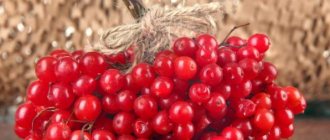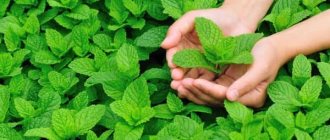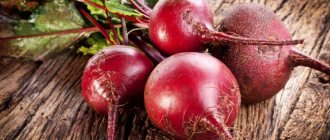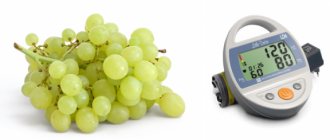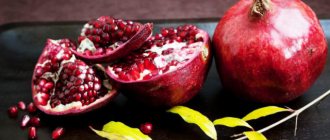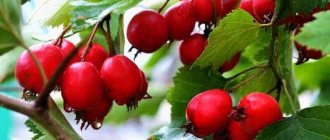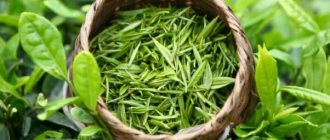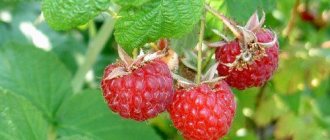Using fennel to lower blood pressure is a natural addition to traditional therapy. In the initial stage of development of hypertension, regular use of umbrella grass will help get rid of unpleasant symptoms. The advantage of herbal medicine is its versatility and accessibility. It appears in gardens in April and delights until the end of September and October. This is a traditional seasoning for vegetables, meat and fish dishes.
However, the hypotensive property of fennel is of particular importance. Using remedies from the collection of folk recipes will help the patient reduce the frequency of crises and lower blood pressure.
Effect on pressure
Fennel is widely used in medicine: its infusion lowers blood pressure and is used in the treatment of stage 1 and 2 hypertension, as a strong diuretic. All parts of the plant have a hypotensive effect: leaves, stems, seeds (fruits).
Active ingredients in their composition:
- calm the nervous system: reduce irritability, agitation, eliminate anxiety, normalize sleep;
- Expands the walls of arteries, relieves spasms, inhibits vascular inflammation, restores elasticity;
- removing excess fluid from the body, relieving swelling.
All these properties help reduce high blood pressure, stabilize blood pressure levels and reduce the risk of hypertension.
Fennel seeds have a strong antispasmodic effect. They are recommended for the prevention of angina attacks in neurotic disorders.
Properties of dill
Traditional medicine pays attention to the healing properties of the aromatic umbrella. All parts of the herb have beneficial effects. But the maximum amount of active ingredients is contained in fennel seeds.
Chemical composition of the herb
An ordinary vegetable garden is struck by many chemical elements. This is what determines the usefulness of a pressure aroma umbrella.
List of main components:
- ascorbic acid;
- B vitamins;
- vitamins of group A;
- fluorine;
- sodium;
- magnesium;
- manganese;
- chromium;
- copper.
Fennel preparations have a calming effect. Drinking infusions and decoctions before bedtime reduces anxiety and restlessness and improves sleep. It is useful in treating hypertension.
Fennel preparations are acceptable for use during pregnancy and breastfeeding.
In this regard, fennel is a particularly valuable medicine: women during this period suffer from unstable blood pressure.
Chemical composition and beneficial properties
Herbs, stems, and seeds of fennel contain many useful and valuable substances for the body:
- ascorbic acid, nicotinic acid;
- vitamins: carotene, thiamine, riboflavin;
- essential oils: oleic, palmitic, linoleic acids;
- flavonoids: quercetin, kaempferol;
- carbohydrates, proteins, pectins;
- mineral salts: iron, calcium, potassium, phosphorus.
The high content of essential oil, a complex of vitamins and minerals improves digestion, increases appetite, and normalizes metabolism.
Fennel, and especially its seeds, are recommended for dietary use for:
- obesity;
- high cholesterol;
- atherosclerosis;
- hypertension;
- diseases of the liver, gall bladder, kidneys;
- Increased amount of gas;
- Respiratory diseases accompanied by cough.
It is worth using fennel during pregnancy and lactation. Improves lactation, psycho-emotional state, maintains proper functioning of the digestive tract, prevents flatulence, intestinal spasms and colic.
What and how to eat to avoid stones?
Promotes the formation of stones. Fast food, meat (especially fatty meat), sugar and other easily digestible carbohydrates (sweets, flour, soda), low fiber intake, very low-calorie diets (up to 1500 kcal per day), high fructose intake (diabetic foods, honey, fructose soda), beans and other legumes, vitamin C deficiency, overeating (excess calorie intake), prolonged fasting.
Protects against the formation of stones. Monounsaturated and polyunsaturated fats (vegetable oils), nuts, fiber (vegetables, fruits and whole grains), calcium (dairy products), moderate alcohol consumption containing no more than 20-40 g of pure alcohol per day, coffee and caffeine, vitamin C and foods rich in it, a regular diet, a vegetarian diet, fish and fish oil, with low-calorie diets it is important to consume enough fat (7-10 g per day).
Traditional recipes with dill for high blood pressure
Dill seeds for blood pressure are taken in the form of a decoction or infusion. Herbs can be consumed fresh, but it is much more useful to prepare medicinal drinks that relieve swelling and stabilize blood pressure.
The most effective recipes:
- A decoction of seeds for hypertension and edema. In a thermos, pour 10 g of raw material with hot water, 200 ml, and leave overnight. Take 50 ml three times a day. If you don’t have a thermos, bring the water with the seeds to a boil and simmer for 30 minutes. Okay, take it too.
- Dill for blood pressure and high cholesterol. Finely chop the leaves and stems. Add a glass of hot water to 2 tablespoons of herb, leave for half an hour, cover the pan with a lid. Drink with two buns.
- Dill powder. Grind the seeds into powder using a coffee grinder. Take 1 tablespoon (without adding) with water three times a day. The course of treatment is 3 weeks, then it is advisable to switch to greens or dill water.
- Dill water. To prepare 40 g of dried or fresh seeds, pour 500 ml of hot water and leave in a thermos for 3-4 hours. You can put it in a water bath, hold it for half an hour, and then keep it with a lid in a tightly closed container for 2 hours. Water can be prepared from ready-made fennel oil (available at pharmacies). Dissolve 0.2 ml of essential oil in a glass of warm water (not boiling!). Drink 1 tablespoon 3 times a day. Dill water lowers blood pressure and improves digestion.
- Dill tea with pressure. Method one: pour 1 tablespoon of dried seeds into 200-300 ml of boiling water, leave for 10 minutes, drink immediately. Second method: after brewing black or green tea, add 1 tablespoon of fresh finely chopped herbs to the infusion. You can drink up to 4 teaspoons during the day. You can add a slice of lemon or sweeten with honey.
- Dill tincture, which lowers blood pressure, cleanses blood vessels of cholesterol deposits. Heat 3 tablespoons of seeds and 500 ml of Cahors over low heat for 15 minutes, without bringing to a boil. Strain and store in a dark glass bottle. Take 1 tablespoon an hour before bedtime. The duration of treatment is 10 days, then a 7-day break. Repeat every month.
- A remedy for blood pressure, neurotic disorders (headache, nausea, dizziness, insomnia). Pour 1 tablespoon of fennel seeds into a glass of milk, bring to a boil, reduce heat to low, and simmer for 10 minutes. Drink immediately in warm, small sips. The duration of treatment is 14 days.
Decoctions and infusions of dill seeds can be drunk for a long time, from 1 to 3 months.
How to properly prepare seeds
Medicinal raw materials must be properly prepared and dried. Thanks to this, all useful substances will be preserved.
- The best month to collect umbrellas is June.
- Ripe inflorescences should be olive in color. Brown color means the fruit is overripe, while light green color means it is unripe.
- The umbrella should be free of mold, insect larvae and cobwebs.
- Inflorescences should be trimmed in dry, windless weather.
- Bend the umbrellas into loose bundles and hang them to dry under a canopy in the shade.
- Discard dried seeds. Separate the seeds from the stem and leaves.
The prepared material should be stored in a paper or canvas bag in a dry, dark place. If you cannot collect the raw materials yourself, then you should buy fennel seeds at the pharmacy.
Medicinal preparations with dill for hypertension
Fennel can be combined with other medicinal herbs for blood pressure:
- Collection No. 1: eliminates swelling, headaches, symptoms of dyspepsia, has a calming effect. 5 g valerian or valerian root, 5 g fennel seeds, 10 g juniper, 300 ml boiling water. Mix the ingredients, add hot water, leave for 3 hours. Take 1 tablespoon three times a day after meals. If you suffer from insomnia, take the infusion for the third time 1 hour before bedtime.
- Collection No. 2: lowers blood pressure, normalizes lipid metabolism, accelerates the elimination of bad cholesterol. Fennel seeds, anise, coriander, chamomile flowers are taken in equal proportions. Pour 2 tablespoons of raw material into 200 ml of boiling water and leave for 15-30 minutes. Drink twice. You can add honey.
- Collection No. 3: Increases immunity, improves digestion, relieves symptoms of hypertension. 1 tablespoon of crushed raspberry leaves, black currants, hop cones, fennel seeds, dried apple peel, 1 liter of water. Mix the ingredients, add water, bring to a boil, simmer for 10 minutes. Drink 200 ml in the morning and before bed.
Herbal treatment lasts 21 days and can be repeated after a two-week break.
Reviews
Reviews about the treatment of hypertension with dill are positive.
Olga Aleksandrovna, 65 years old: I have been suffering from hypertension for many years. I always took a lot of drugs. The doctor advised supplementing traditional treatment with dill-based products. I drank a decoction of seeds. I began to feel better, the headaches became much weaker. Improved sleep.
Elena, 28 years old: My head began to hurt often. After visiting a doctor and monitoring blood pressure readings, initial hypertension was diagnosed. My grandmother (she knows a lot about herbs) advised me to drink dill water. It helped! The headache stopped and my blood pressure returned to normal.
Contraindications
Treatment with fennel-based drugs is contraindicated:
- people with hypotension;
- Pregnant women at risk of miscarriage;
- People with pancreatitis, inflammation of the gallbladder;
- For stones in the kidneys, bladder, gall bladder.
Exceeding the recommended dose may cause side effects: dizziness, temporary blurred vision, fatigue.
By observing all precautions and duration of use, fennel can be used as a medicine to treat many diseases, including hypertension. However, it should be remembered that this plant is not used instead of medicine, but as a prophylaxis or an addition to the main treatment.
Myth three. Adenoma is a precancerous condition.
An adenoma, which is a benign hyperplasia (tumor) of the prostate gland, has nothing in common with cancer. These are two different diseases. Another thing is that their symptoms are largely similar. First of all, this is a violation of urination, which is expressed in frequent urges that occur with monotonous consistency at night. The final period of the disease is sad: the bladder is so blocked by the tumor that it stops emptying completely. Therefore, if you feel that your bladder is not emptying completely, if you urinate intermittently for several minutes, if the pressure of your stream is weak, there cannot be two opinions. Hurry to the doctor! Otherwise, you risk developing a complication that is fraught with acute urinary retention and the urgent installation of a special cystostomy drainage tube, which you will have to walk with for several weeks, or even months, to relieve the burden on the bladder and kidneys. who also suffer. The formation of cameos in the bladder, pyelonephritis, and renal failure are frequent companions of advanced forms of adenoma. It’s even worse to miss prostate cancer - the incidence of which has recently taken first place among cancer diseases in the male population. In order to exclude a dangerous diagnosis, in addition to ultrasound and digital examination of the prostate gland, it is necessary to take an analysis for the level of specific prostate antigen (PSA) in the blood - the main marker of malignant prostate disease.
Myth fifth. After removal of the prostate adenoma, you can forget about intimate life.
And that's not true. After surgery (open and sparing), in 90% of patients, sexual function is restored in full. Problems can only arise with conception, since 30% of those who have undergone surgery to remove an adenoma develop so-called retrograde ejaculation, when ejaculation occurs not outward, but into the bladder. But this problem can also be fixed. If a man dreams of an heir, another medical invention comes to the rescue - in vitro fertilization. Only in this case, the process of artificial conception is preceded by a rather complex procedure - special centrifugation of urine, which allows separating sperm. And only then they take it to the woman. Of course, this is not very pleasant. But men do not complain: living with a constant eye on the toilet or with a tube in the bladder is much worse. Prepared by Tatiana GURYANOVA AiF-Health dated July 30, 2009
